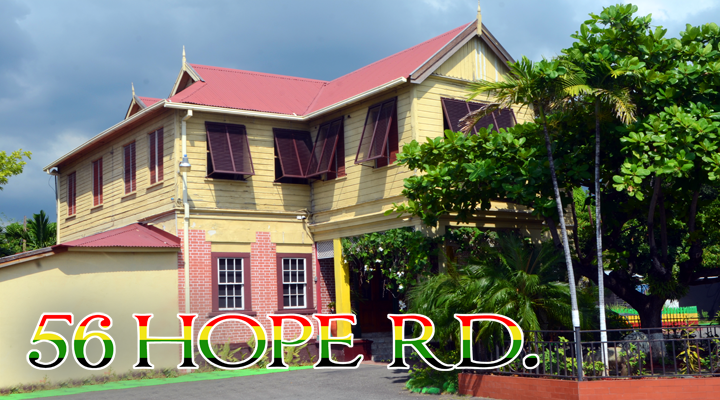I had three stereotypes about Jamaica in mind before coming to the island. I’m not 100% sure, but Bob Marley may have helped to implant all of those ideas. First of all, I knew that everyone in Jamaica had dreadlocks. Anyone who could possibly sport them in my folk tale book Anansi and the Market Pig certainly did. So, the rat, cat and bull didn’t, but almost everyone else did. But, once you land in Jamaica, you quickly learn that isn’t the case. Yes, you can see those locks every day and every place, but most people sport something a whole lot shorter and, my guess, a lot more comfortable.
My second stereotype about the people of Jamaica is that they all say, “Yeah, man.” Well, it actually sounds more like "Ya mon", but they do. It’s true. No stereotype at all. Every one of them. You hear these two words all day long, from everyone, anywhere you turn. I don’t know if Bob Marley said it as well, but chances are good. Oh, yeah, man.
And the third stereotype? That would be weed, kaya, ganja, pot, reefer, grass, dope or whatever else you might want to call marijuana. It’s legally and readily available in Jamaica in two-ounce quantities. But, I honestly don’t know how much is required to actually make up two-ounces. I have no interest in ever knowing that. And, the best friend I made during my stay in Jamaica has never used the stuff. Thank goodness. But, Bob Marley did. It’s in his music, on his album covers, photographed, documented and even portrayed in murals at the Bob Marley Museum. He believed it to be a healing herb.
I knew they guy’s name and could tell you two songs by this reggae legend (Buffalo Soldier and One Love). But, that’s about all I knew of this national hero. So, yes, before I left the island, I had to learn more at the Bob Marley Museum, a Jamaican Heritage Site.
 Mural at the entrance of the museum
Mural at the entrance of the museum Robert Nesta Marley was born on February 6, 1945, on his grandmother’s farm in Nine Mile, British Jamaica, a rural community in the north central part of the island. His mother, Cedella Booker, was 18 years old and his father, Norval Marley, was a white Jamaican from England and somewhere around 55 to 60 years old. I’m not going to touch that.
The opportunities in young Bob Marley’s life changed when he moved to Trench Town, an area of Kingston, when he was twelve. (In case you just have to know, Trench Town is the area of Kingston right next to Rose Town, where my mural number 60 was painted.) In Trench Town, Marley was influenced by musicians in the community, both family and friends. By 1963, (when Bob was 18) he had already formed Bob Marley and the Wailers. And, two years later, the group debuted their first album, which included “One Love” and brought them world-wide attention.
In the sixties, Marley converted to Rastafarianism and the message of this movement spread around the world in the lyrics of his reggae music. It’s hard to sum up a religion in a few words, but one of the main founders, Marcus Garvey, was inspired by a “back to Africa” movement. Really devout followers, grew their hair out in dreadlocks, inspired by a lion’s mane. Haile Selassie, the crowned ruler of Ethiopia, was viewed as a Biblically fulfilled king of Africa and the Conquering Lion of the Tribe of Judah. And, smoking cannabis was a way of communicating with God.
I have the feeling that any day is a good day to visit the Bob Marley museum. There were several groups of school children there when I visited. My guide tried hard to direct our little group around their way and out of their path. But, there were a lot of people roaming the building.
And, hopefully, if you go there, you’ll have a guide as excellent as the one I had. From what I heard there were a lot of good guides. In every corner of the house, you could hear the guides/performers/singers working their hardest to pull the lyrics of classic reggae hits out of their visiting guests. And, isn’t that the experience you want in a musician’s home? There were people, of course, who knew all the lyrics and swayed just right to the beat. They sang with the guides, harmonized and danced. It just wasn’t me. I didn’t know the lyrics and I have no moves. But, I do recognize a good public speaker when I hear one. I was well informed and entertained.



 RSS Feed
RSS Feed